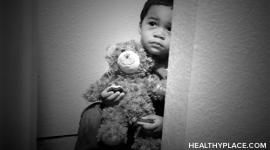Child Abuse Prevention: How to Stop Child Abuse

Child abuse prevention is one of the main priorities of the Administration for Children and Families, which has recently received additional funding to ensure the success of this mandate. Child abuse prevention programs can protect families and save the lives of children but they require commitment from parents, individuals, and community organizations.
Ways to prevent child abuse, as well as stop child abuse from recurring, consists both of introducing protective factors against child abuse and eliminating the risk factors for child abuse. Both strategies have been shown to reduce the incidence of reported child abuse.
Child Abuse Prevention Protective Factors
Preventing child abuse can be done by addressing parenting. Specifically, the Administration for Children and Families identifies five protective factors for child abuse prevention:
- Nurturing and attachment – involves developing a bond and expressing love between parent and child. Studies show that affection shapes a baby's brain and reduces the risk of mental illness.1 Early positive relationships also lead to better grades, social interactions, healthier behaviors and an increased ability to cope with stress in the future.2
- Knowledge of parenting and of child and youth development – parents that have an understanding of the importance of their role in the development of their children are more motivated to create a positive environment. Factors that are known to create a positive effect on child development include respectful communication and listening, consistent rules and expectations and safe opportunities for independence.3
- Parental resilience – involves the ability to cope with the stresses of everyday life, as well as the occasional crisis. This resilience allows the parent to deal with stress in a healthy way rather than possibly put the child in abusive situations when stress from raising the child occurs.4
- Social connections – parents with connections to family and friends have a support network to help them deal with family stressors. Isolated parents are known to be at greater risk for child abuse and neglect.5
- Concrete supports for parents – involves ensuring parents have all they require to meet the basic needs such as food, shelter, transportation, and clothing for their family. Additionally, the ability to access essential services, such as healthcare and childcare, reduce stress and prevent child abuse and neglect.6
Ways to Prevent Child Abuse Risk Factors
Preventing child abuse risk factors involves numerous efforts including child sexual assault prevention classes. As opposed to the child abuse prevention protective factors that aim to change a parent's behavior, the child sexual assault prevention programs aim to reduce the risk of child abuse by changing the child's behavior. This is done by educating children on physical abuse and sexual abuse, as well as how to avoid risky situations. Additionally, knowing how to respond to abuse, if it takes place, is also part of child abuse prevention programs.
Home visitation can also be a powerful tool in preventing child abuse. Home visits can alert professionals to developing risky situations and provide parents with the information needed to avoid them becoming full-blown child abuse cases.7
Ten Ways to Prevent Child Abuse
According to Prevent Child Abuse America, here are ten things you can do to prevent child abuse:8
- Be a nurturing parent
- Help a friend, relative or neighbor
- Help yourself
- Know what to do if your baby cries
- Get involved in developing the services needed to meet the needs of children and families
- Look into parenting resources at your local library and help develop resources if needed
- Promote child abuse prevention programs at school
- Monitor your child's television and video viewing as violent images can harm young children
- Volunteer at a local child abuse prevention program
- Report suspected child abuse or child neglect
APA Reference
Tracy, N.
(2021, December 17). Child Abuse Prevention: How to Stop Child Abuse, HealthyPlace. Retrieved
on 2025, November 24 from https://www.healthyplace.com/abuse/child-abuse-information/child-abuse-prevention-how-to-stop-child-abuse



